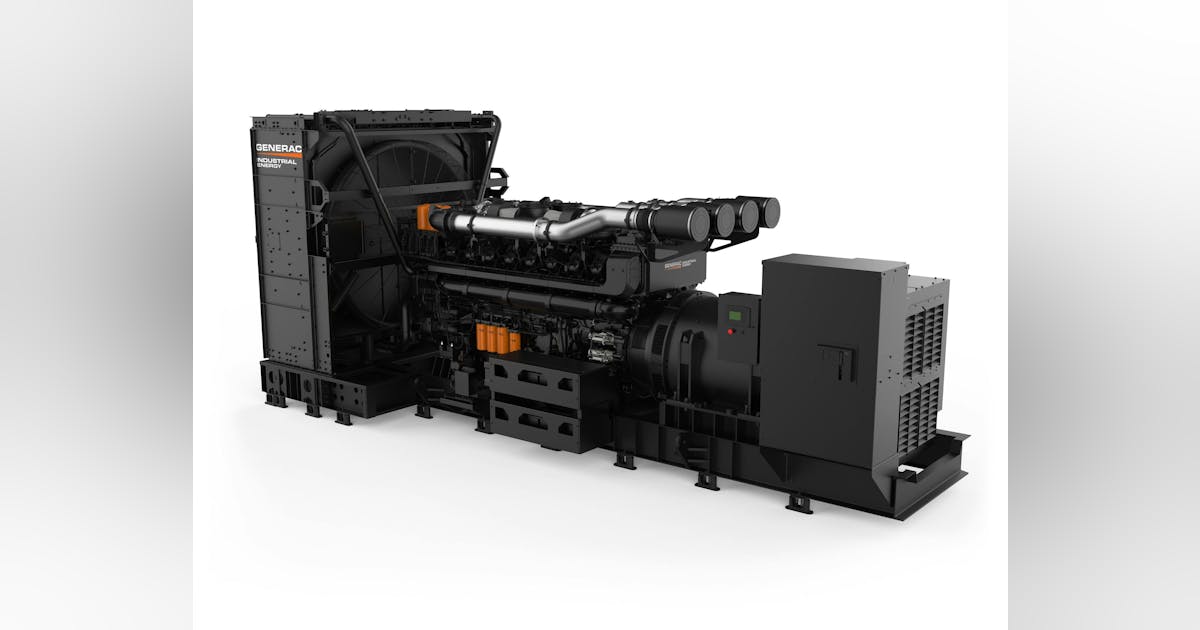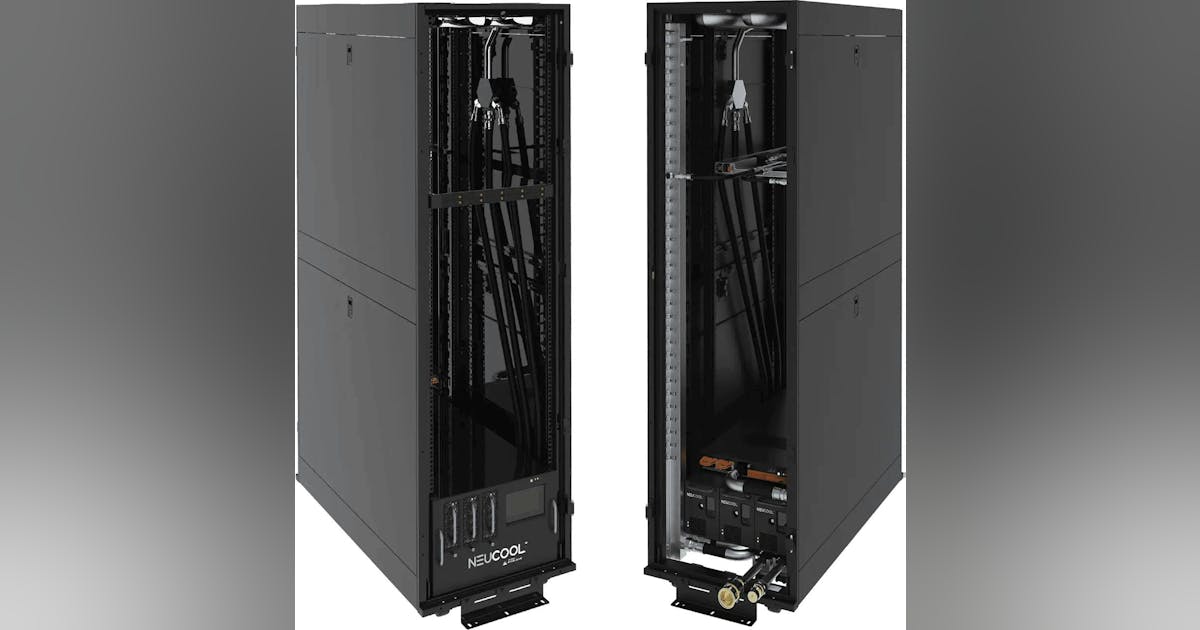Colossal Biosciences has announced that it has brought the dire wolf back from extinction. The Dallas-based “de-extinction” company announced the rebirth the once extinct dire wolf.
The dire wolf, largely assumed to be a legendary creature made famous from the HBO hit series Game of Thrones, was an American canid that had previously been extinct for over 12,500 years. I’ve done an interview with the company leaders, who were really planning to make the announcement tomorrow until The Atlantic decided to break the news embargo. I’ll run that interview later.
The successful birth of three dire wolves is a revolutionary milestone of scientific progress that illustrates another leap forward in Colossal’s de-extinction technologies and is a critical step on the pathway to the de-extinction of other target species, the company said. Yep, it’s like the plot of Jurassic Park.
Additionally, Colossal has birthed two litters of cloned red wolves, the most critically endangered wolf in the world, using a new approach to non-invasive blood cloning. The birth of red wolves provides further evidence of the link between de-extinction efforts and the company’s growing capacity to support conservation efforts globally through de-extinction technology innovation.
This news comes on the heels of the recent announcement of the Colossal woolly mouse, which previously held the record for unique germline edits in an animal with eight precision edits.
With the dire wolves, Colossal has made 20 unique precision germline edits including 15 edits from the ancient gene variants that have not existed in over 12,000 years, setting a new bar for precision germline editing in any animal.
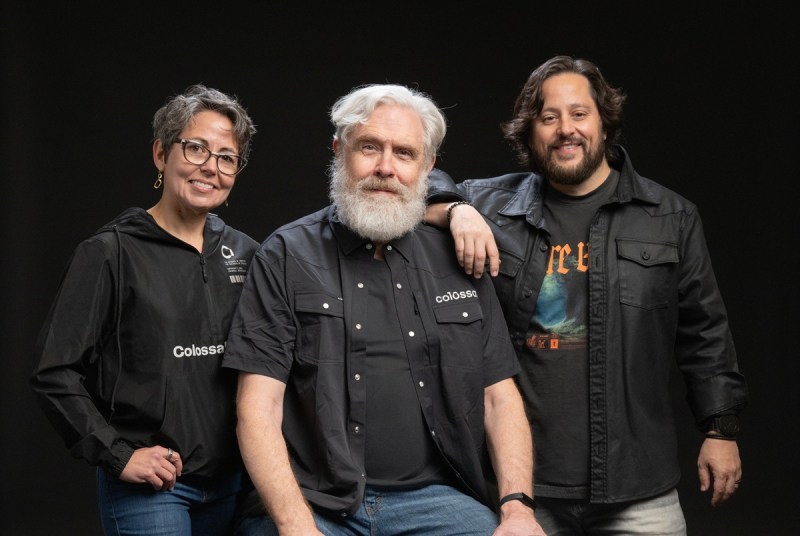
“I could not be more proud of the team. This massive milestone is the first of many coming examples demonstrating that our end-to-end de-extinction technology stack works,” said CEO of Colossal Ben Lamm, in a statement. “Our team took DNA from a 13,000 year old tooth and a 72,000 year old skull and made healthy dire wolf puppies. It was once said, ‘any sufficiently advanced technology is indistinguishable from magic.’ Today, our team gets to unveil some of the magic they are working on and its broader impact on conservation. ”
Lamm told me he showed the dire wolves in their safe enclave to George R.R. Martin, author of A Song of Ice and Fire, and Martin broke down in tears. Just last month, Colossal Biosciences said it had created mice with the wooly hair of the wooly mammoth. The company is trying to bring back the wooly mammoth, the dodo and the thylacine.
The two litters of Colossal’s dire wolves include two adolescent males (Romulus and Remus) and one female puppy (Khaleesi, named after a Game of Thrones character). Colossal also birthed two litters of red wolves from three different genetic founder lines. These litters include one adolescent female red wolf (Hope) and three male red wolf puppies (Blaze, Cinder, and Ash).
“Preserving, expanding, and testing genetic diversity should be done well before important endangered animal species like the red wolf are lost. Another source of ecosystem variety stems from our new technologies to de-extinct lost genes, including deep ancient DNA sequencing, polyphyletic trait analyses, multiplex germline editing, and cloning. The dire wolf is an early example of this, including the largest number of precise genomic edits in a healthy vertebrate so far. A capability that is growing exponentially,” said Harvard geneticist and cofounder of Colossal, George Church, in a statement.
The wolves are thriving on a 2,000-plus-acre secure expansive ecological preserve that is certified by the American Humane Society and registered with USDA. Colossal employs ten full time animal care staff to support the wolves’ physical and mental well-being. The entire preserve, which includes specialized engagement zones and habit types, is enclosed by 10-foot-tall, zoo-grade fencing with redundant perimeter security.
Within the preserve, the wolves are continuously monitored through on-site live cameras, security personnel, and drone tracking to ensure their safety and welfare. The preserve includes a smaller, six acre secure site where the dire wolves can be further tended to and studied. This smaller area also supports an on-site veterinary clinic, a wolf management facility, an outdoor storm shelter, and natural built dens for the wolves.
“Colossal has achieved American Humane Society Certification, the prestigious designation ensuring excellence in animal welfare and care. Optimal welfare is evidenced by spacious habitats with ample space and opportunity for animals to socialize, exercise, and exhibit natural behaviors,” said Robin Ganzert, CEO of American Humane Society, in a statement. “Staff are passionate, highly engaged and devoted to the animals in their care. We congratulate Colossal as a shining example of excellence in humane care and welfare. The technology they are pursuing may be the key to reversing the sixth mass extinction and making extinction events a thing of the past.”
The conservation property will provide lifetime care, feeding, and protection for the wolves. The wolves will be monitored and observed to assess their readiness to move into larger protected and managed care facilities. Ultimately Colossal plans to restore the species in secure and expansive ecological preserves on indigenous land.
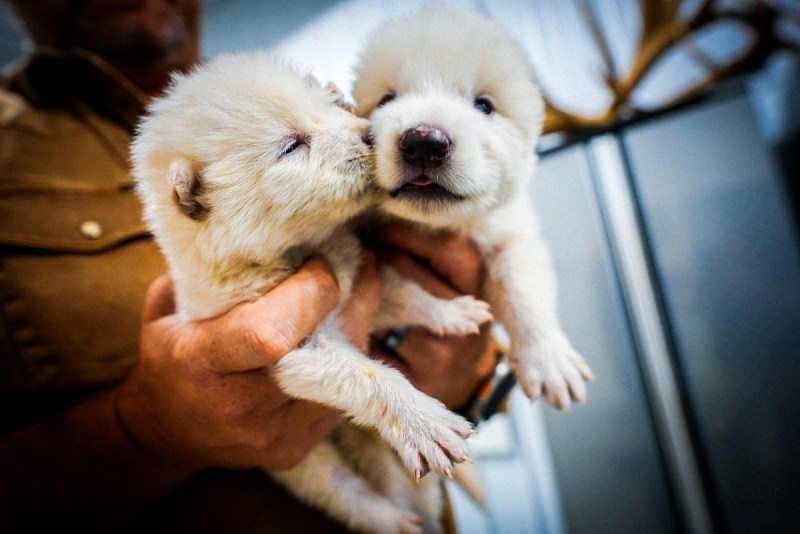
“The de-extinction of the dire wolf is more than a biological revival. Its birth symbolizes a reawakening – a return of an ancient spirit to the world. The dire wolf carries the echoes of our ancestors, their wisdom, and their connection to the wild,” shared MHA Nation Tribal Chairman Mark Fox, in a statement. “Its presence would remind us of our responsibility as stewards of the Earth – to protect not just the wolf, but the delicate balance of life itself. The work of the team at Colossal Biosciences is not only significant to our lands and people, but for conservation efforts across the globe. The ability for technological innovation to bring forth something so culturally and spiritually significant to indigenous people is paralleled by the far reaching impacts that this technology provides for the future of stewardship on our planet in species diversity and conservation.”
An overview of dire wolves
Dire wolves (Aenocyon dirus) were distributed across the American midcontinent during the Pleistocene ice ages. The oldest confirmed dire wolf fossil, from Black Hills, SD, is around 250,000 years old. Colossal’s genomic data indicate, however, that the lineage first appeared during the Late Pliocene, between 3.5 and 2.5 million years ago, as a consequence of admixture between two more ancient (and now extinct) canid lineages.
Dire wolves were as much as 25% larger than gray wolves and had a slightly wider head, light thick fur and stronger jaw. As hyper-carnivores, their diet comprised at least 70% meat from mostly horses and bison. Dire wolves went extinct at the end of the most recent ice age, around 13,000 years ago.
“I have spent nearly 10,000 days in the field studying the behavior of the wolves in Yellowstone National Park. Prior to Yellowstone, I worked in Denali National Park in Alaska where I studied wildlife species that live on the tundra: wolves, grizzlies, caribou, and Dall sheep,” said Rick Mcintyre, author and internationally recognized as one of the world’s foremost experts on wild wolf behavior, and Colossal Conservation Advisory Board Member. “Later, I spent some time on the northern and western coasts of Alaska. I was born far too late to see now extinct Ice Age species such as dire wolves and mammoths. “
He added, “Long ago, my Celtic ancestors probably lived among those animals in northern Europe and may have had some role in contributing to their extinction. I never thought I might live in a time when we have the science to bring back those species and restore them to selected sections of their former homeland. I have a dream that some time in the near future I can go back to Alaska, or a similar place in Northern Europe or Asia, and see those extinct species that have been brought back thanks to science. When that happens, I will begin to study the behavior of dire wolves.”
For many people, introduction to the dire wolf occurred through the lens of entertainment, rather than the natural world. Mentions of this legendary prehistoric canid in role-playing games like Dungeons & Dragons; video games like World of Warcraft; music like the Grateful Dead’s aptly-named song, “Dire Wolf”; and most notably, George R.R. Martin’s best-selling fantasy novel series, A Song of Ice and Fire and its TV adaptation, Game of Thrones.
“Many people view dire wolves as mythical creatures that only exist in a fantasy world, but in reality, they have a rich history of contributing to the American ecosystem,” said Game of Thrones creator, esteemed author, and Colossal Investor and Cultural Advisor George R.R. Martin. “I get the luxury to write about magic, but Ben and Colossal have created magic by bringing these majestic beasts back to our world.”
The science behind the return of the dire wolf
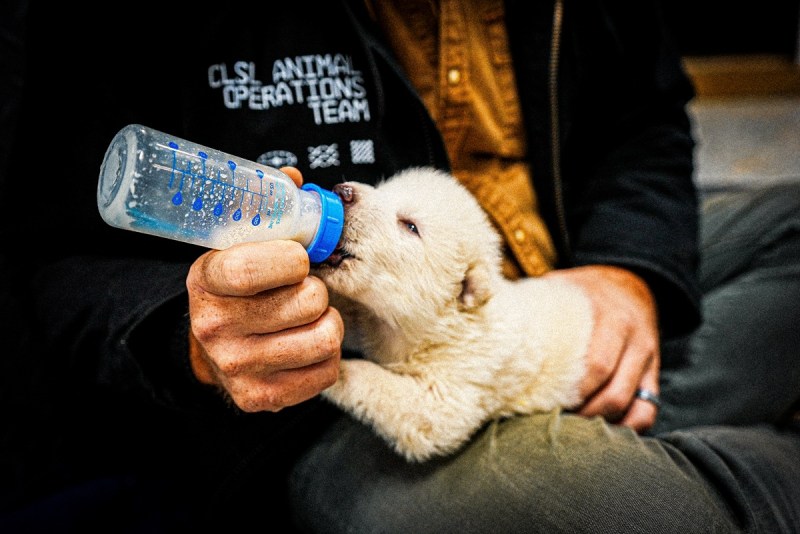
The birth of dire wolf pups proves the efficacy of Colossal’s de-extinction protocols and the feasibility of creating a standardized toolkit for de-extinction. The dire wolf pups set the record for number of precise genetic edits in any living species. The company performed a record 20 precise edits to the genome, all modifications derived from analysis of the dire wolf genome with 15 of those edits being the exact extinct variants. Together these edits contribute to a larger, stronger body and a longer, fuller coat with light pigmentation.
To de-extinct the dire wolf, Colossal:
● Extracted and sequenced ancient DNA from two dire wolf fossils;
● Assembled ancient genomes from both, and compared those to genomes from living canids including wolves, jackals, foxes, and dholes;
● Identified gene variants specific to dire wolves;
● Determined that dire wolves had a white coat color, and long thick fur – aspects of the dire wolf phenotype that were unknowable from fossils and consistent with animals that lived during cold periods of the Pleistocene ice ages;
● Performed multiplex gene editing to a donor genome from their closest living relative, the gray wolf, resulting in edits 20 sites in 14 genes with 15 of those edits being extinct variants;
● Screen edited cell lines via whole genome sequencing and karyotyping;
● Cloned high quality cell lines using somatic cell nuclear transfer into donor egg cells;
● Performed embryo transfer and managed interspecies surrogacy; and,
● Successfully birthed an extinct species.
Colossal extracted ancient DNA from two dire wolf fossils: a tooth from Sheridan Pit, Ohio, that is around 13,000 years old, and an inner ear bone from American Falls, Idaho, around 72,000 years old. The team deeply sequenced the extracted DNA and used Colossal’s novel approach to iteratively assemble high quality ancient genomes, resulting in a 3.4-fold coverage genome from the tooth and 12.8-fold coverage genome from the inner ear bone. Together, this data provided more than 500 times more coverage of the dire wolf genome than was available previously.
Interspecies gestation
Colossal’s computational analysis of the reconstructed dire wolf genome revealed several unknowns of dire wolf evolution. Previous work could not resolve the origin of dire wolves, leading to speculation that jackals may be their closest living relative. Analyses of the high quality dire wolf genome, however, revealed that the gray wolf is the closest living relative of dire wolves – with dire wolves and gray wolves sharing 99.5% of their DNA code.
Interestingly, the analysis also revealed that dire wolves have a hybrid ancestry, which helps to explain the previous uncertainty. Colossal’s analyses indicated that the dire wolf lineage emerged between 3.5 and 2.5 million years ago as a consequence of hybridization between two ancient canid lineages: an ancient and early member of the tribe Canini, which may be represented in the fossil record as Eucyon or Xenocyon, and a lineage that was part of the early diversification of wolf-like lineages including wolves, dholes, jackals, and African wild dogs.
“Our novel approach to iteratively improve our ancient genome in the absence of a perfect reference sets a new standard for paleogenome reconstruction ,” said Beth Shapiro, Colossal’s chief science officer and a leading expert in the field of ancient DNA, in a statement. ”Together with improved approaches to recover ancient DNA, these computational advances allowed us to resolve the evolutionary history of dire wolves and establish the genomic foundation for de-extinction – specifically for selecting with confidence dire wolf specific genetic variants that establish our targets for gene editing.”
Analyses of the dire wolf genome allowed Colossal to identify the key variants in dire wolves that are not found in other canids that tell the story of dire wolf evolution. For example, Colossal identified multiple genes undergoing positive selection that are linked to dire wolf skeletal, muscular, circulatory, and sensory adaptation. The team discovered dire wolf specific variants in essential pigmentation genes revealing that dire wolves had a white coat color – a fact that is impossible to glean from fossil remains alone. The team also identified dire wolf specific variants in regulatory regions that alter the expression of genes. From this list, Colossal used its proprietary computational pipeline and software to select 20 gene edits across 14 distinct loci as targets for dire wolf de-extinction, focusing on the core traits that made dire wolves unique including size, musculature, hair color, hair texture, hair length, and coat patterning.
Based on Colossal’s genomic analysis, the team used gray wolves – the closest living relative of dire wolves – as the donor species for establishing cell lines. Using Colossal’s novel approach to establish cell lines from a standard blood draw, the team collected blood during a normal veterinary procedure and established cell lines from blood epithelial progenitor cells (EPCs). The team then performed multiplex genome editing of these cells followed by whole genome sequencing to confirm editing efficiency and identify any alterations to the genome arising during extended cell culture.
The Colossal dire wolf team selected high quality cells with normal karyotypes for cloning by somatic cell nuclear transfer into donor oocytes, followed by short-term culture to confirm cleavage. Healthy developing embryos were then transferred into surrogates for interspecies gestation. Three pregnancies led to births of the first de-extinct species.
“The de-extinction of the dire wolf and an end-to-end system for de-extinction is transformative and heralds an entirely new era of human stewardship of life,” said Christopher Mason, a scientific advisor and member of the board of observers for Colossal, in a statement. “The same technologies that created the dire wolf can directly help save a variety of other endangered animals as well. This is an extraordinary technological leap in genetic engineering efforts for both science and for conservation as well as preservation of life, and a wonderful example of the power of biotechnology to protect species, both extant and extinct.”
Colossal edited 15 extinct dire wolf variants into the donor gray wolf genome, creating dire wolves that express genes that have not been expressed for more than 10,000 years. These target genes were selected because each is linked to one or more key traits that made dire wolves unique among canids. For example, Colossal targeted CORIN, a serine protease that is expressed in hair follicles and suppresses the agouti pathway, impacting coat color and patterning. The dire wolf CORIN variants impact pigmentation in a way that leads to a light coat color.
Colossal also edited dire wolf specific variants in a multi-gene regulatory module that has been linked to variation in body size as well as ear, skull, and facial morphology. The region encodes eight genes that establish species-specific constraints in skeletal size and structure, and has been linked to features including differences in human height and the diverse beak shapes among finch species.
One gene encoded by this module – HMGA2 – is directly associated with body size in dogs and wolves. Another gene in this module – MSRB3 – has been linked to variation in ear and skull shape among canines and other mammals. Given the role of these genes in establishing species-specific size and morphology, the dire wolf team edited dire wolf-specific variants into gene enhancers (DNA sequences make it more likely that the gene will be transcribed into RNA) in this genomic region.
For each high impact variant identified as linked to a target phenotype, Colossal’s dire wolf team created a detailed profile of all potential impacts on a donor gray wolf genome. To ensure healthy outcomes, the team discarded variants that would incur some risk outside of the predicted phenotype or prioritized variants already evolved in gray wolves with the predicted phenotype.
For example, Colossal edited the protein coding region of LCORL, a transcription factor that regulates gene expression by influencing whether a gene is transcribed. Variations in LCORL have been linked to variation in body size in many species, including humans, horses, and canids. The dire wolf has three changes to the LCORL protein sequence that are predicted via 3D modeling to alter the way the protein folds precisely at the location where LCORL should bind to a major gene silencing complex known as the PRC2 domain. Interestingly, large dog breeds (which are domesticated gray wolves) have a variant of LCORL that is missing the PRC2 domain entirely.
As the dire wolf version is predicted to have a similar phenotypic impact as the variant found in larger dog breeds, and because of the potential for LCORL to interact with other genes in the gray wolf genetic background that are not edited, Colossal’s dire wolves express the protein that is found in the largest grey wolves. This choice allows for the predicted phenotypic impact and without any additional risk.
“Functional de-extinction uses the safest and most effective approach to bring back the lost phenotypes that make an extinct species unique,” said Shapiro. “We turn to ancient DNA to learn as much as we can about each species and, whenever possible, to link specific extinct DNA sequence variants to each key trait. In some cases, we learn that variants already present in the surrogate species can be used to engineer that key trait. In those cases, engineering existing variants into the donor genome is an optimal path, as that path provides strong confidence in the outcome with minimal risk to the animal.”
The dire wolf genome has protein-coding substitutions in three essential pigmentation genes: OCA2, SLC45A2, and MITF, which directly impact the function and development of melanocytes. While these variants would have led to a light coat in dire wolves, variation in these genes in gray wolves can lead to deafness and blindness. The team therefore engineered a light colored coat in Colossal’s dire wolves via a path known to be safe in gray wolves: by inducing loss-of-function to MC1R and MFSD12. These genes influence expression of pigments eumelanin (black) and pheomelanin (red) in melanocytes that deposit to the coat, achieving the lighter pigmented coat color phenotype suggested by the dire wolf genome but without any potential health impacts.
“When I learned of Colossal’s approach to engineering the light coat color into their dire wolves, I was simultaneously impressed and relieved,” said Elinor Karlsson, associate professor in Bioinformatics and Integrative Biology at the UMass Chan Medical School and Director of Vertebrate Genomics at the Broad Institute of MIT and Harvard, in a statement. “By choosing to engineer in variants that have already passed evolution’s clinical trial, Colossal is demonstrating their dedication to an ethical approach to de-extinction.”
The path to the dire wolf and the red wolf also led to innovations reaching beyond de-extinction, including advances in ancient DNA genome reconstruction and genotype-to-phenotype prediction, as well as optimized tools for multiplex gene editing. Another important contribution from the project are Colossal protocols to establish cell lines directly from blood that can be used for somatic cell nuclear transfer.
The collection of whole blood is a rapid and noninvasive procedure that is routinely carried out on sedated wolves for veterinary monitoring purposes. These field collections provide a valuable opportunity to isolate expandable endothelial progenitor cells (EPCs), which are cells that are involved in vascular repair and neovascularization and differentiate into the cells that line blood vessels. Isolated EPC cell lines can be frozen for later genomic analyses and, Colossal has now shown, can be used to successfully clone wild canids. Biobanking and cloning EPCs from threatened or endangered populations of wild wolves provides a safety net to preserve the genomic diversity present today from further loss and extinction.
“Whether due to natural or human-induced changes in climate, habitat and food source, the extinction of an untold number of species is a loss to our planet’s history and biodiversity. Modern genetics lets us peer into the past, and modern genetic engineering lets us recover what was lost and might yet thrive. Along the way, it invents the tools that let us protect what is still here. As humans we have a unique capacity and moral obligation to steward the earth for the benefit of ourselves and all living things, for now and for the future,” said Alta Charo, Professor of Law and Bioethics and Colossal Bioethics Lead, in a statement.
A leap forward for red wolf recovery
The technology developed within the Colossal de-extinction pipeline has immediate applications for conservation efforts globally. The research undertaken to birth the dire wolf has been successfully paralleled to the birth of two litters of the red wolf.
Colossal’s two litters of red wolves include one female and three males from a total of three different cell lines. Colossal generated the cell lines, collected from the southwest Louisiana population, using its novel method of insolating EPCs following a standard blood draw. The pups were born after somatic cell nuclear transfer into a donor oocyte followed by embryogenesis and embryo transfer into a surrogate mother. Both embryo transfers resulted in the birth of healthy red wolf pups.
“In a world where humans are rapidly eroding the environment, species (especially wolves) need allies. One of the most impactful ways to be an ally is to use science to help discover and preserve lost genes, genetic diversity, and phenotypes. We now have the technology that can edit DNA to increase resilience in species that are facing extinction or to revive extinct genetic diversity and species. We get to witness the de-extinction of the dire wolf, which is a marvel of scientific progress, and just the start of numerous species we can bring back to create a better, more habitable, and balanced world. I am beyond thrilled that such technologies are also being leveraged to support programs of preventing extinction in endangered species like the red wolf,” said Bridgett von Holdt, Princeton associate professor of Evolutionary Genomics and Epigenetics.
Currently listed as critically endangered, fewer than 20 red wolves remain in North America, which makes them the most endangered wolves on the planet. Thousands of red wolves once roamed across most of eastern North America. But by 1960 they were nearly extinct. The Endangered Species Act and a captive breeding program have been critical to securing the reintroduction of red wolves back into the wild in eastern North Carolina.
The Fish and Wildlife Service’s Red Wolf Recovery Program successfully grew the wild population to more than 120 wolves. When the program was halted in 2015, however, the population crashed to as few as seven wolves. In 2021 the program resumed, but red wolves have struggled to regain their numbers. One challenge has been to maintain genetic diversity among the captive and re-wilded population of red wolves, all of which descend from only 12 founder individuals. Adding Colossal’s red wolves to the captive breeding population would increase the number of founding lineages by 25%.
“The dire wolf project is surreal and unreal at the same time. It’s recreating reality that stemmed from reality, from millennia ago. To think that in this day dire wolves aren’t just mythical illusions and tales told in movies that we believe may have had origins in reality…Now, we have the science and ingenuity to bring life back to once existing reality. Colossal is drastically changing the prognosis for countless endangered species around the world,” said Aurelia Skipwith, former director of the U.S. Fish and Wildlife, in a statement. “The company’s work to combat extinction of the red wolf creates hope for so many other critically endangered species fighting for survival.”
The research program for the dire wolf has also helped efforts to develop technologies for the red ‘ghost’ wolf, unique canids, found only on the gulf coast of Texas and Louisiana who carry lost DNA and biodiversity of the red wolf. Researchers Bridgett vonHoldt of Princeton University and Kristin Brzesk of Michigan Technological University lead the Gulf Coast Canine Project which aims to understand the genetic ancestry of the wild canines persisting along the Gulf Coast of the United States. They study how red wolf ancestry shapes morphology and behavior, and the support of Colossal has helped them accelerate their research through the inclusion of data from the red wolf genome, the assembly of a reference genome for the recovery population’s red wolves, and finally the creation of a pangenome for US native canids.The hope is that this work can set precedent for other species with a complicated genetic history, while also improving the capacity of conservation efforts for the red wolf, today.
In addition to the challenges of reintroduction, the red wolf’s biggest threat of extinction comes from limited genetic diversity that resulted from the population’s bottleneck that occurred during its rapid decline. The technology and understanding developed through Colossal’s red ‘ghost’ wolf project has now unlocked additional genetic diversity and red wolf ancestry that can be a resource to create a genetic rescue program for the red wolf population.
“The extinction crisis is a massive, mostly unattended, and growing worldwide problem. I applaud Colossal for taking bold and innovative steps to arrest and reverse the crisis by developing cutting edge genetic techniques to undergird reintroduction efforts of imperiled species. By collaborating with Dr. vonHoldt on red wolf recovery, Colossal creates potential to increase the genetic diversity of this species which exists only because of a captive population founded by a paltry 14 individuals. Perfecting genomic tools to integrate “ghost alleles” from Gulf Coast canids would increase red wolf genetic diversity and generate knowledge for recovering other imperiled species, like the bolson tortoise, that are compromised by restricted ranges and reduced genetic diversity.”- Mike Phillips, Director of the Turner Endangered Species Fund and project lead for rewilding gray wolves in the Greater Yellowstone Ecosystem.
From conservation to rewilding
Colossal’s long term goal is for their red wolves to be re-wilded through current US conservation efforts in collaboration with the US government.
“Colossal’s successful de-extinction of the dire wolf represents a massive coup for conservation,” said Matt James, Colossal’s Chief Animal Officer and Colossal Foundation Executive Director. “The technologies developed on the path to the dire wolf are already opening up new opportunities to rescue critically endangered canids. The creation of less-invasive sampling tools such as our EPC blood cloning platform allows for the conservation community to ramp up biobanking efforts of those species on the brink.”
Colossal’s de-extinction mission always includes plans to rewild associated species in alignment with global conservation efforts. Research suggests that rewilding wolves can have massive impacts on factors that drive climate change and support biodiversity. Inspired by the US Fish and Wildlife’s bold efforts to rescue the red wolf from the brink of extinction, Colossal has created technological platforms to offer key tools to those in the fight to save the world’s most endangered wolf.
“Today’s dire wolf announcement represents an exciting scientific step and demonstrates the power and possibilities of genetic technologies,” said Barney Long, Phd, Senior Director of Conservation Strategy for Re:Wild. These technologies will likely transform the conservation of critically endangered species that still exist, and we are excited to apply them to prevent extinctions. From restoring lost genes into small, inbred populations to inserting disease resistance into imperiled species, the genetic technologies being developed by Colossal have immense potential to greatly speed up the recovery of species on the brink of extinction.”
Colossal will provide more information about the rescue of the red wolf and restoration of the dire wolf in the coming months following extensive feasibility studies, monitoring, and tracking of the health and well-being of the new species.
“As someone who’s fascinated with canids—I’ve written about coyotes and wolves—the idea of being able to have dire wolves again is tremendously, personally exciting, and I think it’s going to be exciting to a lot of people. An organization like Colossal, to me, is one of the things that gives me hope. If I were looking 100 years out, I would say that we’re very likely to have animals once again that we thought were always gone—just as I once thought I was never going to get to hear a wolf howl… That was something I really never thought I’d have a chance to experience, and it became reality. And so, that makes me think that more and more, we’re going to get to experience what Henry David Thoreau lamented back in the 1850s—that he wasn’t getting to experience an entire heaven and an entire Earth. And I think that’s something to look forward to.” – Dan Flores, A. B. Hammond Professor Emeritus of the History of the American West at the University of Montana-Missoula
Partnerships
The effort to de-extinct the dire wolf, genetic rescue of the red wolf, and innovative gray wolf conservation programs are all made possible through Colossal’s collaborative work with a broad spectrum of Indigenous communities, conservation organizations, and scientific experts.
Colossal extended its deepest gratitude to the MHA Nation, the Nez Perce Tribe, the Karankawa Tribe of Texas, Indigenous Led, and the Wind River Tribal Buffalo Initiative, whose ancestral knowledge and insights have guided the company’s efforts. Colossal Biosciences and the Colossal Foundation also thank the many conservation organizations whose expertise and passion fuel these initiatives, including the American Wolf Foundation, Re:wild, Conservation Nation, Gulf Coast Canid Project, International Coexistence Network, Wolf Connection, Grizzly Systems and the Yellowstone Wolf Project.
Colossal was founded by emerging technology and software entrepreneur Ben Lamm and world-renowned geneticist and serial biotech entrepreneur George Church, and is the first to apply CRISPR technology for the purposes of species de-extinction. Colossal creates innovative technologies for species restoration, critically endangered species protection and the repopulation of critical ecosystems that support the continuation of life on Earth. Colossal is accepting humanity’s duty to restore Earth to a healthier state, while also solving for the future economies and biological necessities of the human condition through cutting-edge science and technologies. To follow along, please visit: www.colossal.com.
GB Daily
Stay in the know! Get the latest news in your inbox daily
Read our Privacy Policy
Thanks for subscribing. Check out more VB newsletters here.
An error occured.















